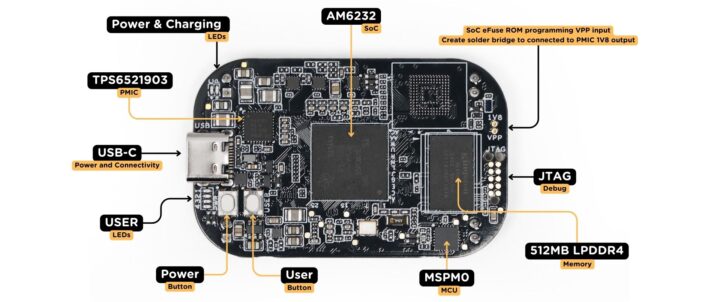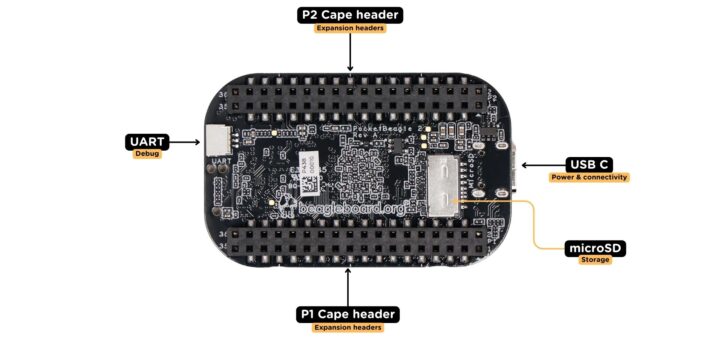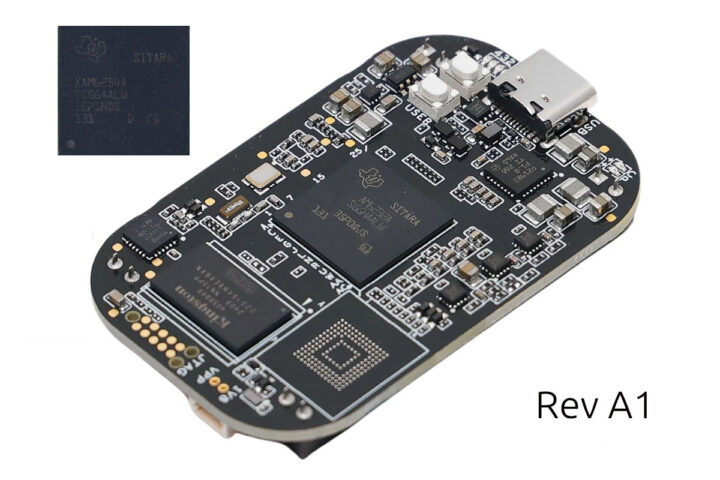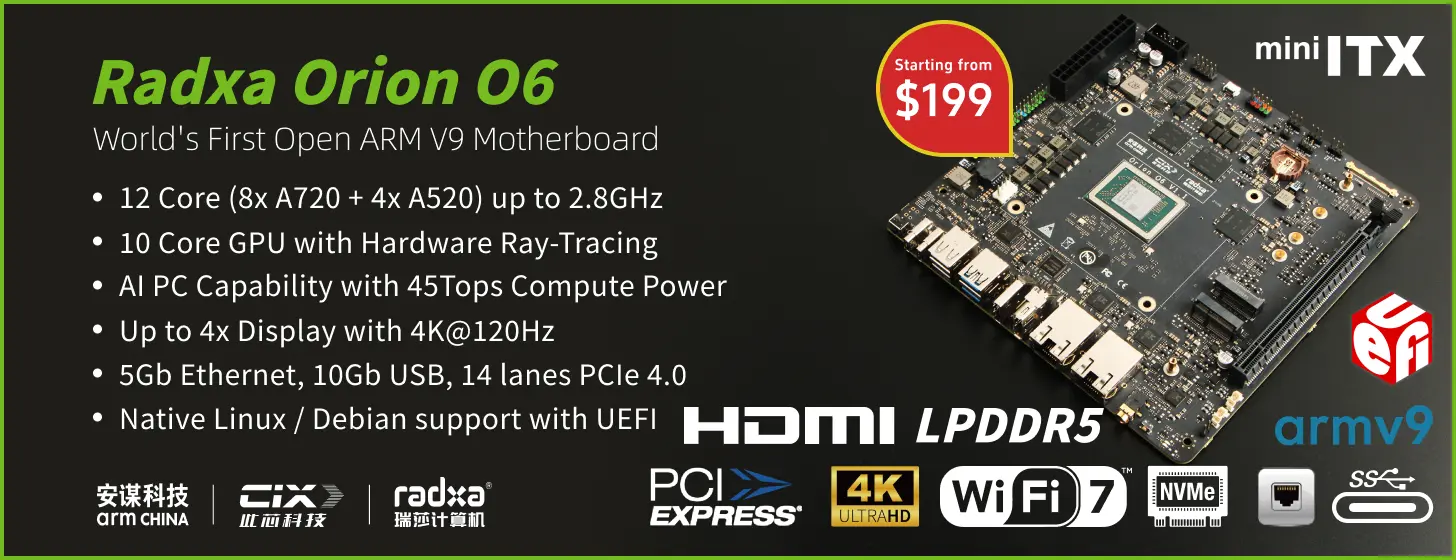The PocketBeagle 2 was first introduced with a 1.0 GHz Texas Instruments Sitara AM6232 dual-core Cortex-A53 GPUless SoC in February with Rev A0 of the PCB. The BeagleBoard.org Foundation has now released a new PocketBeagle 2 Rev A1 board with a 1.4 GHz Sitara AM6254 quad-core Cortex-A53/Cortex-M4F SoC with a 3D GPU.
All other features remain the same, with a secondary Texas Instruments MSPM0L1105 Arm Cortex-M0+ microcontroller, 512 MB LPDDR4 memory, a microSD card slot, a USB Type-C port for power and connectivity, a Raspberry Pi Debug Probe port, and two 36-pin expansion headers.
PocketBeagle 2 Rev A1 specifications:
- Main SoC – Texas Instruments AM6254 as found in the BeaglePlay SBC
- CPU
- Quad-core 64-bit Arm Cortex-A53 @ 1.4 GHz
- Arm Cortex-M4F real-time core @ 400 MHz with 256KB SRAM
- GPU – Imagination PowerVR Rogue AXE-1-16M with support for OpenGL 3.x/2.0/1.1, Vulkan 1.2
- Dual-core Programmable Real-Time Unit Subsystem (PRUSS) running up to 333 MHz
- Dedicated Device/Power Manager
- Security – Secure boot and Trusted Execution Environment (TEE) supported
- CPU
- Secondary MCU – Texas Instruments MSPM0L1105 Arm Cortex-M0+ microcontroller running at 32 MHz with 32KB flash, 4KB SRAM, 12-bit ADC, etc…
- System Memory – 512 MB LPDDR4 SDRAM, 3200 MHz
- Storage – microSD card slot supporting 1.8V and 3.3V
- USB – USB Type-C port for power and connectivity
- Expansion – 2x 36-pin expansion headers
- 8x analog inputs
- 52x digital I/Os
- High-speed USB
- Multiple digital interface peripherals
- Debugging
- Raspberry Pi Debug Probe compatible UART port for debugging (3-pin JST-SH 1.00mm connector)
- 10-pin JTAG TAG-CONNECT footprint
- Misc
- Power and User/Boot buttons
- LED Indicators – Power, Battery charging, 4x user LEDs
- Power Supply
- 5V/1A via USB-C
- Cape Header VIN (5V/1A)
- TPS6521903 PMIC
- Dimensions – 55 x 35 mm
- Weight – 12.7 grams


The Pocket Beagle 2 Rev A1 does not have video output, so the GPU is not super useful, unless used for general-purpose GPU (GPGPU) applications, or if MIPI DPI or OLDI/LVDS signals are exposed through the expansion headers for a future display CAPE expansion board.
While the SoC has changed, the way to get started with the board is the same, and users are asked to flash a Debian 12 image to a microSD card. The documentation page has the full details, although it still needs to be updated as the “Demos and Tutorials” section is empty.
The Rev A1 board is new enough that all photos in this article and the official documentation are still for the Rev A0 board. The good news is that we are told the price is the same for the new quad-core board, and it goes for about $29 on Mouser or Digikey. I can not find any mention of Rev A0 or Rev A1 on either online store, but a recent forum post on Beagleboard.org confirms that both only sell the quad-core version.
Via ElectronicsWeekly.

Jean-Luc started CNX Software in 2010 as a part-time endeavor, before quitting his job as a software engineering manager, and starting to write daily news, and reviews full time later in 2011.
Support CNX Software! Donate via cryptocurrencies, become a Patron on Patreon, or purchase goods on Amazon or Aliexpress. We also use affiliate links in articles to earn commissions if you make a purchase after clicking on those links.






It uses the same SoC as the BeaglePlay board: https://www.beagleboard.org/boards/beagleplay
The GPU in there is
PowerVR Rogue AXE-1-16M:
Would be better if they had slapped on a nic instead